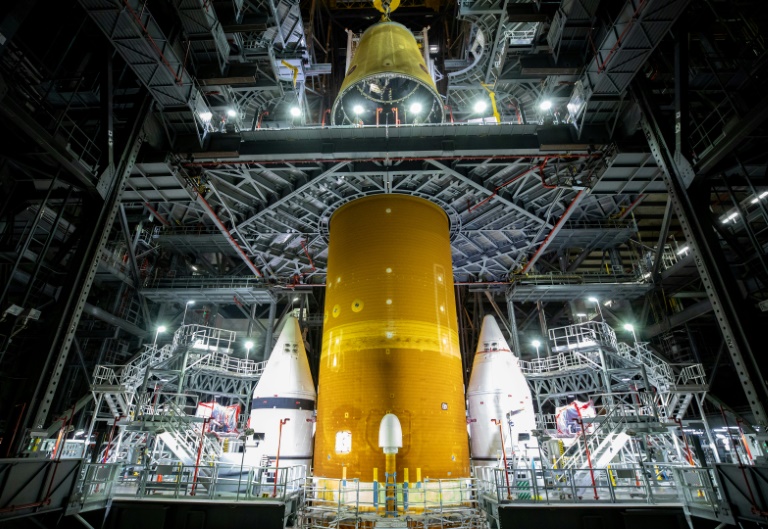Part of NASA’s giant SLS rocket which will be used for the Artemis mission to return humans to the Moon. — © AFP MANDEL NGAN
Back to the Moon. NASA is gearing up for a new chapter in lunar exploration by sending a trio of high-tech instruments to the Moon. Two of the devices will be attached to a new lunar rover capable of carrying astronauts or operating remotely, while the third will gather data from orbit. For the Moon-bound devices, these will be equipped onto what is known as an LTV (Lunar Terrain Vehicle).
The LTV is part of NASA’s efforts to explore the lunar surface as part of the Artemis campaign and is the first crew-driven vehicle to operate on the Moon in more than 50 years. The Artemis program’s goal is to establish a permanent base on the Moon to facilitate human missions to Mars. This means reestablishing a human presence on the Moon for the first time since the Apollo 17 mission in 1972.
Designed to hold up to two astronauts, as well as operate remotely without a crew, this surface vehicle will enable NASA to achieve more of its science and exploration goals over a wide swath of lunar terrain.
These tools will focus on hunting for ice, mapping minerals, and analysing what lies beneath the surface. The aim is to offer a clearer picture of the Moon s makeup and its potential resources. While a future battle over resources might send geopolitical shudders through many, understanding more about our only satellite offers an enticing jump in scientific understanding.
Hunting minerals with AIRES
The Artemis Infrared Reflectance and Emission Spectrometer (AIRES) will identify, quantify, and map lunar minerals and volatiles, which are materials that evaporate easily, like water, ammonia, or carbon dioxide. The instrument will capture spectral data overlaid on visible light images of both specific features of interest and broad panoramas to discover the distribution of minerals and volatiles across the Moon’s south polar region.
Looking beneath the surface
The Lunar Microwave Active-Passive Spectrometer (L-MAPS) will help define what is below the Moon’s surface and search for possible locations of ice. Containing both a spectrometer and a ground-penetrating radar, the instrument suite will measure temperature, density, and subsurface structures to more than 131 feet (40 meters) below the surface.
The L-MAPS instrument team is led by Matthew Siegler from the University of Hawaii at Manoa. Another aim is to uncover clues to the history of rocky worlds in our solar system.

From above
The Ultra-Compact Imaging Spectrometer for the Moon (UCIS-Moon) will be used in orbit. The instrument will provide regional context to the discoveries made from the LTV. From above, UCIS-Moon will map the Moon’s geology and volatiles and measure how human activity affects those volatiles.
The spectrometer also will help identify scientifically valuable areas for astronauts to collect lunar samples, while its wide-view images provide the overall context for where these samples will be collected.
The UCIS-Moon instrument will also provide the Moon’s highest spatial resolution data of surface lunar water, mineral makeup, and thermophysical properties.
What this all means
According to Nicky Fox, associate administrator, Science Mission Directorate: “The Artemis Lunar Terrain Vehicle will transport humanity farther than ever before across the lunar frontier on an epic journey of scientific exploration and discovery.”
She adds: “By combining the best of human and robotic exploration, the science instruments selected for the LTV will make discoveries that inform us about Earth’s nearest neighbour as well as benefit the health and safety of our astronauts and spacecraft on the Moon.”
These instruments will enable scientists to characterise the surface not only where astronauts explore, but also across the south polar region of the Moon, offering further opportunities for scientific discovery.
